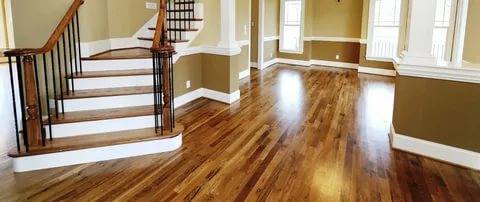When it comes to your timber floor, you want it to look like its best Timber Floor Sanding and Polishing Melbourne are one of the most durable and long-lasting investments you can make for your home. However, as with all-natural products, they will deteriorate over time if not properly cared for.
So, knowing when and how often you should sand and polish is important. We know this can be a confusing subject for some people, so in this article, we will go through the main reasons why you might want to do this, as well as give some tips on how much work your floor actually needs.
Floors That Are Looking Tired And Worn
The problem:
Despite timber floor sanding and polishing Melbourne quality, all hardwood floors will fade, darken, or change colour over time. However, prolonged exposure to direct sunlight, as well as the use of ineffective cleaning products, will hasten the process.
The answer:
To eliminate recurring sun damage, rotate your rugs on a regular basis and use curtains or blinds to protect against direct sunlight. If you have a timber floor that has been sanded and polished before, we recommend leaving it to the professionals.
It is best to leave your timber floors to the experts can restore the original finish on your flooring.
Water Damage
The problem:
Water damage is one of the most common causes of timber flooring problems. Water damage can be caused by leaks, floods or natural disasters such as storms and fires. Water damage can cause warping and buckling in your timber floors, resulting in a dull appearance that is lifeless and slippery.
When left unrepaired, water damage can also make your floor weak, so it may eventually need to be replaced altogether.
The answer:
Retaining a water temperature is the best way to keep your timber floors sanded and polished. Use an extractor fan in wet areas such as kitchens and bathrooms, and avoid over-wetting the floor while cleaning.
Wring out your mops and clothes to ensure that only a small amount of water contacts the floor, and avoid using steam mops.
Scuffs, Dents, And Dings
The problem:
While it’s tempting to think of scratches and dents as part of the natural wear and tear process, they actually need to be repaired as soon as possible. That’s because the longer a scratch or dent remains in place, the more damage it will do over time.
A scratch that is not treated right away can start to rust; a dent could lead to buckles, and both will cause your flooring to look old before its time.
The answer:
The best time to repair these issues is while your timber floors are still wet—it’ll be easier for you if you have access near the area where the damage has occurred.
If your floor has just been floor sanding Melbourne, wait two weeks before putting down the rugs. Implement a no-shoes policy, especially for high heels or stilettos, and keep your pets’ nails and claws short and blunt to avoid scratching or dulling your finish.
Dirt, Rawness, And Other Nastiness
The problem:
Dirt and grit can be removed with a vacuum cleaner, as can any other nasties that might have fallen onto your timber floor.
The answer:
If you’re looking for a gentler approach to cleaning, use a soft brush or feather duster to remove dust from the surface of your timber floors. To remove water damage caused by spills or rainwater, use a damp cloth to wipe up excess moisture.
If your timber floor has been damaged by water, it’s important to clean it as soon as possible to prevent further damage.
Conclusion
Think of timber flooring as a piece of furniture. Are your hardwood floors showing signs of wear? Don’t wait for the damage to worsen; contact Prestige Floors right away. We can sand and polish your timber floors from the ground up, apply a much-needed re-coat, and fix minor damage and repairs.

